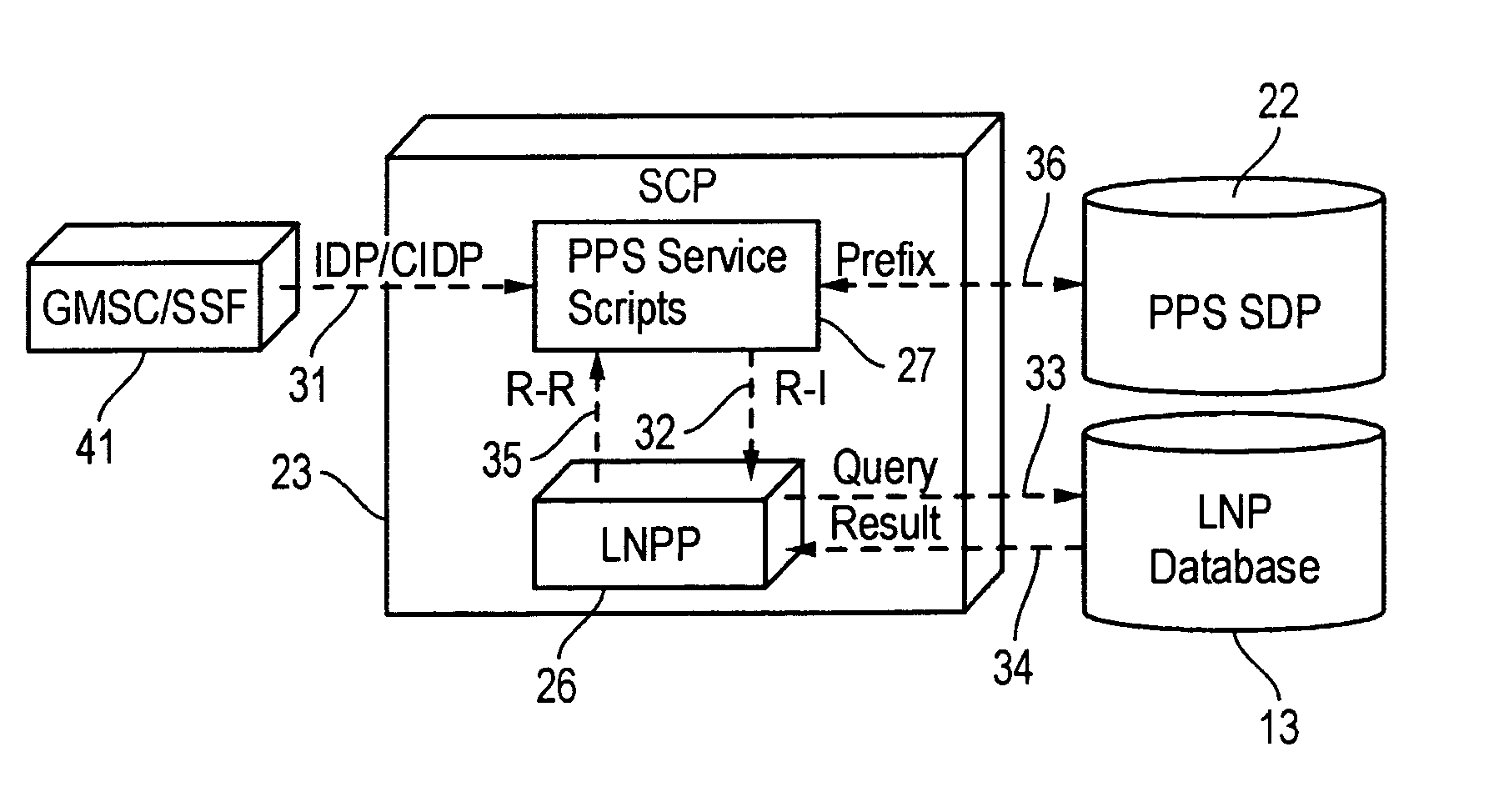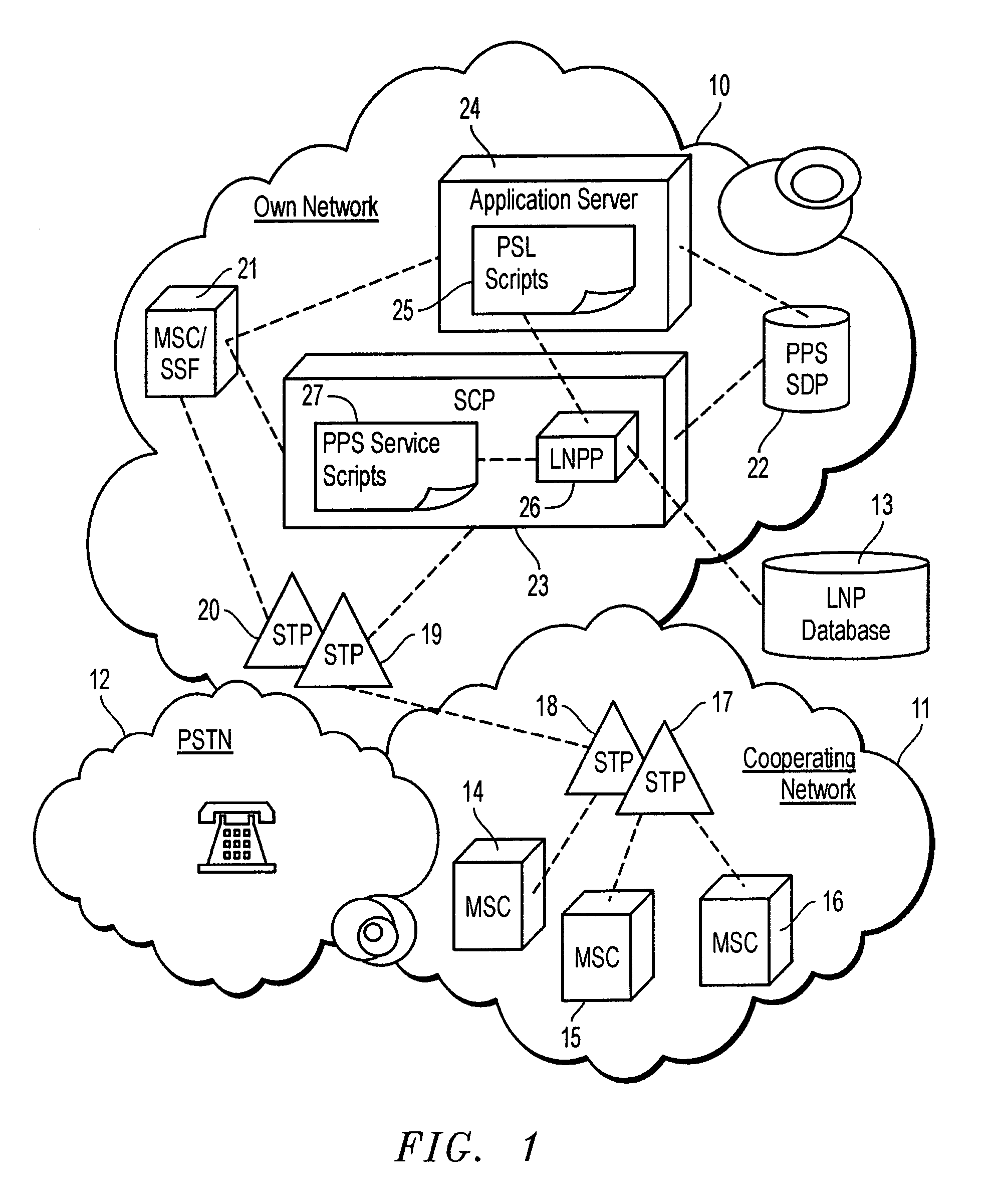System and method for determining tariffs for real-time calls involving ported directory numbers
a technology of directory number and system, applied in the field of telecommunication systems, can solve problems such as incorrect rating using the current methodology
- Summary
- Abstract
- Description
- Claims
- Application Information
AI Technical Summary
Benefits of technology
Problems solved by technology
Method used
Image
Examples
first embodiment
[0025]FIG. 2 is a simplified block diagram of the system of the present invention when handling a mobile origination and forwarding traffic case. In this embodiment, modified PPS Service Scripts 27 within the SCP 23 are utilized along with the new LNPP 26 to implement the new functionality introduced by the present invention. The LNPP 26 is preferably implemented in the SCP 23, but may also be implemented in another node such as the PPS SDP 22 which communicates with the PPS Service Scripts 27 or the PSL Scripts 25.
[0026]During call setup, the MSC / SSF 21 sends a CS1+ Initial Detection Point (IDP) message 31 or a CAMEL Application Part (CAP) v2 CAP Initial Detection Point (CIDP) message to the SCP 23 where the message is received by the PPS Service Scripts 27. The Call State-1(CS1) protocol is described in ITU-T Recommendation Q.1218, which is hereby incorporated by reference herein in its entirety. An enhanced version (CS1+)is utilized herein to carry additional message parameters t...
second embodiment
[0035]FIG. 4 is a simplified block diagram of the system of the present invention when handling a mobile origination and forwarding traffic case. In this embodiment, modified PSL Scripts 25 within the Application Server 24 are utilized along with the new LNPP 26 in the modified SCP to implement the new functionality introduced by the present invention.
[0036]The MSC / SSF 21 sends a CS1+ IDP or CIDP message 51 to the Application Server 24 where the message is received by the PSL Scripts 25. The IDP message contains the MSISDN of the PPS subscriber and the CdPN. The PSL Scripts send a CS1+ Retrieve-Invoke (R-I) message 52 to the LNPP 26 in the SCP 23 with the CdPN that potentially has been ported. The LNPP converts the CS1+ protocol to a protocol recognized by the LNP Database 13 such as an ANSI-41 interface, an 800 interface, or an INAP interface. The LNPP then sends a query 53 to the LNP Database 13 containing the CdPN received in the Retrieve-Invoke message.
[0037]The LNP Database ret...
PUM
 Login to View More
Login to View More Abstract
Description
Claims
Application Information
 Login to View More
Login to View More - R&D
- Intellectual Property
- Life Sciences
- Materials
- Tech Scout
- Unparalleled Data Quality
- Higher Quality Content
- 60% Fewer Hallucinations
Browse by: Latest US Patents, China's latest patents, Technical Efficacy Thesaurus, Application Domain, Technology Topic, Popular Technical Reports.
© 2025 PatSnap. All rights reserved.Legal|Privacy policy|Modern Slavery Act Transparency Statement|Sitemap|About US| Contact US: help@patsnap.com



